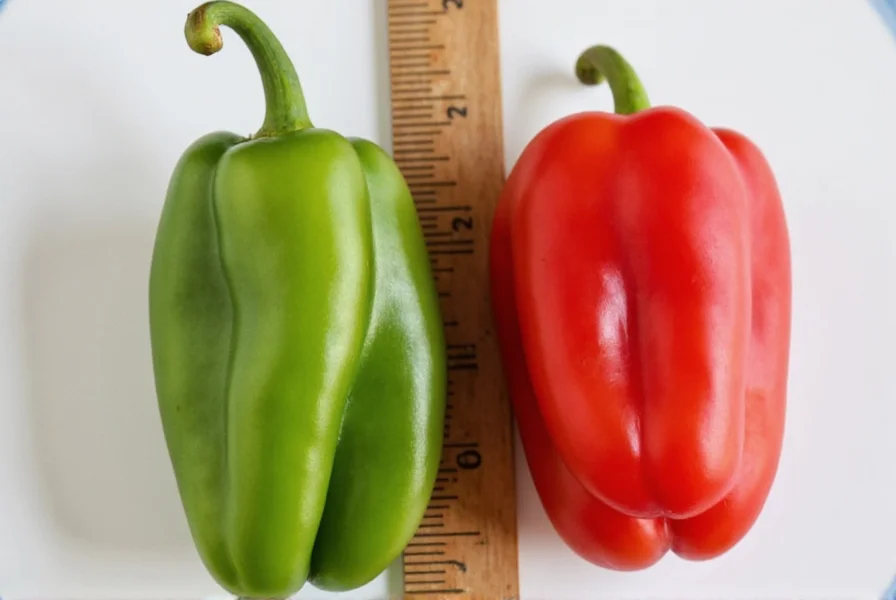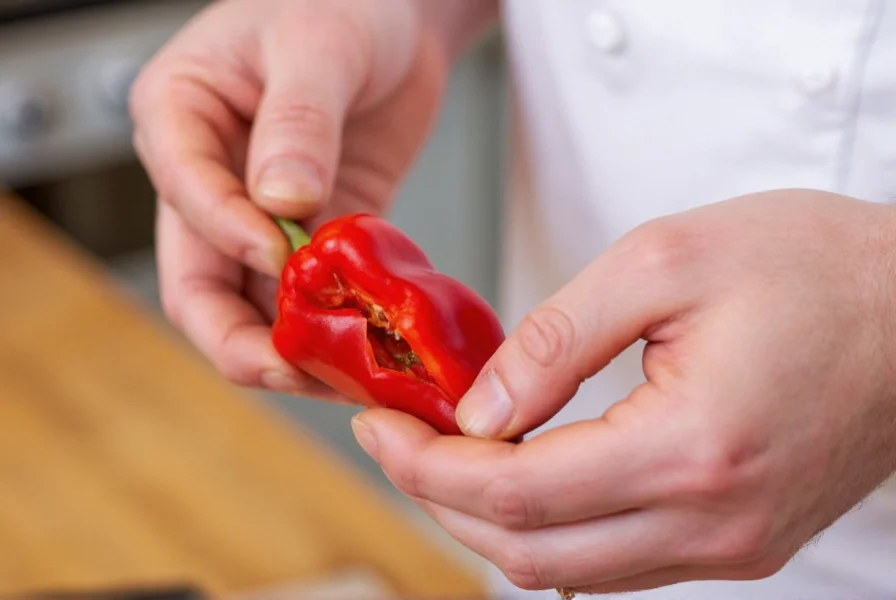Fresno peppers occupy a distinctive position in the chili pepper hierarchy with their balanced heat profile. Understanding their exact placement on the Scoville scale helps home cooks and culinary professionals select the right pepper for their recipes. Unlike some chili varieties with more extreme heat levels, Fresnos offer a manageable kick that enhances dishes without dominating them.
Understanding Fresno Pepper Heat Levels
The Scoville scale measures chili pepper pungency (spiciness or "heat") by determining the concentration of capsaicinoids, primarily capsaicin. Developed by pharmacist Wilbur Scoville in 1912, this scale remains the standard reference for comparing pepper heat worldwide.
Fresno peppers (Capsicum annuum) typically register between 2,500 and 10,000 Scoville Heat Units. Several factors influence where an individual Fresno pepper falls within this range:
- Maturity—Red Fresnos (fully mature) tend to be hotter than green ones
- Growing conditions—Soil quality, temperature, and water stress affect heat levels
- Genetic variation—Different plants produce peppers with varying heat intensities
- Part of the pepper—Seeds and inner membranes contain the highest capsaicin concentration
| Pepper Variety | Scoville Heat Units (SHU) | Heat Level Description |
|---|---|---|
| Fresno Pepper | 2,500–10,000 | Medium heat, similar to jalapeño but often slightly milder |
| Jalapeño Pepper | 2,500–8,000 | Medium heat, the benchmark for many recipes |
| Serrano Pepper | 10,000–23,000 | Medium-hot, significantly hotter than Fresnos |
| Habanero Pepper | 100,000–350,000 | Very hot, tropical fruit flavor with intense heat |
| Bell Pepper | 0 | No heat, sweet flavor profile |
Visual Identification and Characteristics
Fresno peppers closely resemble jalapeños but have some distinguishing features:
- Shape—Slightly smaller and more tapered than jalapeños, typically 2-3 inches long
- Color progression—Start green, mature to bright red (sometimes sold as "red jalapeños")
- Texture—Smooth, glossy skin with thinner walls than jalapeños
- Flavor profile—Grassy and bright when green, developing fruitier notes when red

Culinary Applications of Fresno Peppers
The moderate heat level of Fresno peppers makes them exceptionally versatile in the kitchen. Their flavor profile works well in both raw and cooked applications:
- Salsas and relishes—Their bright flavor enhances fresh preparations without overwhelming heat
- Infused oils and vinegars—Adds subtle heat while preserving the pepper's grassy notes
- Roasted dishes—Develops complex flavors when roasted or grilled
- Seafood pairings—Complements fish and shellfish better than hotter varieties
- Pickling—Retains crisp texture and develops tangy complexity
Chefs often prefer Fresnos over jalapeños when they want noticeable chili flavor with less intense heat. The red variety works particularly well in dishes where color contrast matters, such as garnishes for white or pale-colored foods.
Factors Affecting Heat Perception
When working with Fresno peppers, several factors influence how their heat registers to your palate:
- Fat content—Capsaicin binds to fats, so creamy or oily dishes reduce perceived heat
- Sugar content—Sweet ingredients counterbalance heat perception
- Acidity—Vinegar or citrus can enhance the perception of heat
- Individual tolerance—Genetic differences affect how people perceive capsaicin
- Preparation method—Removing seeds and membranes significantly reduces heat

Substituting Fresno Peppers in Recipes
When Fresno peppers aren't available, understanding their Scoville rating helps identify appropriate substitutes:
- Milder option—Poblano peppers (1,000–2,000 SHU) for reduced heat with similar flavor profile
- Closest match—Jalapeños (2,500–8,000 SHU), though often slightly hotter
- Hotter alternative—Serranos (10,000–23,000 SHU) for significantly more heat
- For red Fresnos—Cayenne peppers can work but are considerably hotter (30,000–50,000 SHU)
When substituting, remember that heat levels vary within each pepper variety. Always taste a small piece before adding to your dish to gauge actual heat intensity.
Historical Context of the Scoville Scale
Understanding the Scoville scale's origins provides context for interpreting Fresno pepper heat ratings. Wilbur Scoville's original method involved diluting pepper extract in sugar water until the heat became undetectable to a panel of tasters. A pepper measuring 5,000 SHU required dilution 5,000 times before the heat disappeared.
Modern laboratories now use high-performance liquid chromatography (HPLC) to measure capsaicinoid content precisely, then convert these measurements to Scoville units. This scientific approach provides more consistent results than the subjective human testing used historically.
Practical Tips for Handling Fresno Peppers
Working with any chili pepper requires proper handling techniques to manage heat exposure:
- Wear gloves when handling, especially when working with multiple peppers
- Avoid touching your face, particularly eyes, after handling peppers
- Wash hands thoroughly with soap and water after preparation
- Use separate cutting boards for peppers to prevent cross-contamination
- Remove seeds and white membranes to reduce heat intensity significantly
- Store fresh peppers in the refrigerator for up to three weeks
For those sensitive to capsaicin, dairy products like milk or yogurt provide immediate relief from burning sensations, as casein proteins bind to and wash away capsaicin molecules.











 浙公网安备
33010002000092号
浙公网安备
33010002000092号 浙B2-20120091-4
浙B2-20120091-4